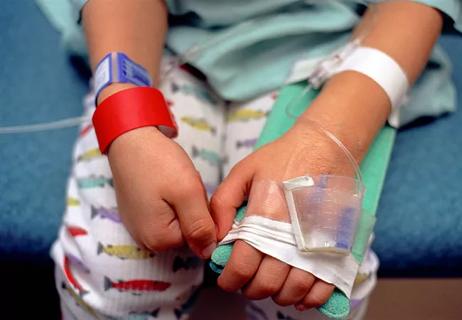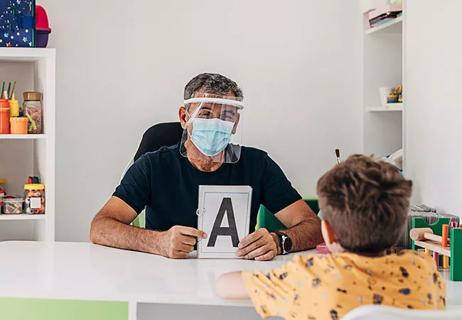Physical Medicine & Rehabilitation team offers specialized care
Cleveland Clinic Children’s Pediatric Rehabilitation Center is one of a select few accredited, freestanding pediatric specialty hospitals in the United States. Physicians in its Pediatric Physical Medicine & Rehabilitation Program provide care for patients with physical impairments that lead to disability. The team provides care in conjunction with standard therapies, surgeries and medications. CQD talked to physiatrist Lainie K. Holman, MD, MFA, to learn more.
Cleveland Clinic is a non-profit academic medical center. Advertising on our site helps support our mission. We do not endorse non-Cleveland Clinic products or services. Policy
Dr. Holman: We provide comprehensive evaluations and collaborate with the family’s pediatrician and other specialists to coordinate and manage care plans for children with lifelong or disabling conditions. We also provide parental education to help families better understand and manage their children’s conditions.
Dr. Holman: Patients are typically referred to us from neonatology, neurology, orthopaedics, trauma, primary care and cardiology. Many other patients come to us for spasticity management, equipment needs, advice regarding orthoses and prostheses, guidelines for therapies, integrative and alternative therapies, nonpharmacologic pain management, assistive and augmented communication, and other adaptations needed for optimal function in school and avocations.
Dr. Holman: We care for children with cerebral palsy, brain injuries, spinal cord injuries, neurologic and other cancers, metabolic disorders, muscle disease, peripheral nerve disorders, communication disorders, orthopaedic injuries and anomalies, burns, sports injuries, repetitive motion strains, musculoskeletal complaints, and essentially every other condition that limits a child’s function in school, play and life.
We also care for pediatric patients with intrathecal baclofen pumps. We are aware of various research and trials in spasticity management and therapies. And we are uniquely suited to help interface with school systems for reentry after injury or illness, and for assistance with input for individualized educational plans (IEP).
Dr. Holman: On the inpatient side, we recently introduced a minimally alert program (MAP), a four-week program for disorders of consciousness designed to optimize patient and caregiver readiness for discharge. We also have a comprehensive inpatient rehabilitation program and our well-known multidisciplinary inpatient chronic pain rehabilitation service.
Dr. Holman: One of the most common conditions we treat is spasticity in the setting of various neurologic conditions (traumatic brain injury, stroke, etc.). Botulinum toxin is one of the modalities we use when the spasticity is interfering with function or seating, or is causing discomfort or range of motion restrictions. It can, in conjunction with a regular home exercise program and physical/occupational therapy, help to relax spastic muscles enough to promote function and strengthening of opposing musculature.
Dr. Holman: Our Center is designed to help children maximize their functionality no matter what their disability. We have cared for children with conditions you might not expect like herpes encephalitis, to rare diseases such as acute flaccid myelitis. We offer our specialized services in a very family-friendly rehabilitation hospital, with the goal of helping children increase their independence and access to their environments.

Cleveland Clinic physicians offer their insights

Increasing support for breastfeeding patients

Program has facilitated nearly 300 consults across 25 departments in less than a year

Though completely preventable, lead poisoning remains a public health threat

Differences in infection rates, management, outcomes and transmission

Helps patients visualize proper tongue placement

On the need for coordinated care